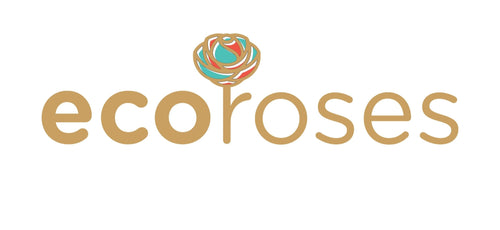When it comes to styling a modern home, less is often more. If you want to enhance your space with beauty and freshness without overwhelming the aesthetic, flowers can be the perfect solution. For a curated selection of blooms ideal for this style, explore minimalist-inspired floral arrangements here. Minimalist flower decor combines clean lines, neutral tones, and purposeful placement to create serene and stylish interiors that still feel warm and inviting.
In this guide, you’ll learn how to incorporate flowers into your modern home in ways that honor the principles of minimalism, while adding natural beauty to your environment.
1. Understanding Minimalist Flower Decor
Minimalism isn’t about having less-it’s about having just enough. In flower decor, this means:
-
Using fewer blooms but making each one count.
-
Selecting colors that complement rather than clash with your home’s palette.
-
Keeping arrangements simple and uncluttered.
Minimalist floral design focuses on balance, proportion, and breathing room. A single elegant stem in a sleek vase can speak louder than a crowded bouquet.
2. Choosing the Right Flowers for Minimalist Spaces
Not every flower suits the minimalist aesthetic. Look for blooms with:
-
Defined shapes – such as calla lilies, orchids, tulips, or protea.
-
Neutral or muted colors – white, cream, blush, soft yellow, pale pink.
-
Long stems – for height and elegance without the need for filler foliage.
Minimalist-friendly flowers include:
-
White orchids
-
Calla lilies
-
Anemones
-
Eucalyptus (as subtle greenery)
-
Ranunculus in soft pastels
3. Minimalist Color Palettes
The color scheme in minimalism usually revolves around:
-
Monochrome neutrals – white, beige, black, gray.
-
Soft, natural hues – blush, sage green, dusty blue.
-
One accent color – to avoid visual clutter.
Example: A tall glass vase with three white lilies against a white wall creates a calming, almost sculptural effect.
4. Vase Selection: The Silent Hero of Minimalist Decor
In minimalist decor, the vase is just as important as the flowers.
Tips for selecting minimalist vases:
-
Choose solid colors (white, matte black, clear glass).
-
Look for simple geometric shapes (cylinders, spheres, cones).
-
Avoid excessive patterns or embellishments.
Sometimes, a unique vase with a strong silhouette can become the focal point-especially if the floral arrangement is intentionally sparse.
5. Placement Matters
Minimalist flower decor relies heavily on strategic placement:
-
Entryways – A single tall bloom in a slim vase can welcome guests without crowding the space.
-
Dining tables – Low, narrow arrangements maintain clean sightlines.
-
Bathrooms – One or two stems in a small jar add luxury without excess.
-
Bedrooms – Neutral blooms on a bedside table encourage calmness.
6. Single-Stem Statements
One of the most effective minimalist approaches is the single-stem arrangement.
Benefits:
-
Highlights the natural beauty of one flower.
-
Reduces maintenance and cost.
-
Fits almost anywhere in the home.
Popular single-stem choices:
-
Peonies (in season)
-
Large-headed roses
-
Protea for a modern, artistic vibe
7. Minimalist Flower Walls & Installations
While minimalism often avoids excess, an intentional flower wall can work in modern interiors when done with restraint:
-
Use one type of flower, evenly spaced.
-
Stick to a monochromatic scheme.
-
Keep negative space between blooms to avoid a crowded look.
This approach works beautifully for home offices, modern dining rooms, or event backdrops.
8. Seasonal Minimalism
Minimalist flower decor doesn’t mean keeping the same arrangement year-round. Seasonal swaps keep your space feeling fresh:
-
Spring: White tulips in a glass vase.
-
Summer: A single sunflower in a tall ceramic cylinder.
-
Autumn: Pampas grass for texture without color overload.
-
Winter: Bare branches with a dusting of faux snow in a black vase.
9. Pairing Flowers With Modern Materials
Modern minimalist homes often feature materials like:
-
Concrete
-
Glass
-
Stainless steel
-
Natural wood
Flowers should complement these textures rather than compete:
-
A glass vase with orchids looks clean and sophisticated.
-
A rough concrete planter with white ranunculus creates a balanced contrast.
10. Minimalist Centerpieces for Special Occasions
Hosting dinner or celebrating a milestone? Keep it elegant:
-
Long wooden table → a series of tiny bud vases, each holding a single white rose.
-
Modern black dining set → low rectangular vase with white calla lilies, lined neatly.
11. The Power of Negative Space
In minimalist floral design, the empty space around the arrangement is as important as the arrangement itself.
-
Don’t crowd surfaces with other decor items.
-
Let the flowers stand alone as the centerpiece.
12. Low-Maintenance Minimalist Flowers
If you want the aesthetic without constant upkeep, consider:
-
Dried flowers (pampas grass, bunny tails)
-
Preserved roses (keep color and shape for months)
-
Artificial flowers (high-quality silk blooms look surprisingly real)
13. Minimalist Floral Care Tips
To keep your minimalist arrangements fresh:
-
Trim stems at a diagonal every 2–3 days.
-
Use clean vases to avoid bacteria growth.
-
Change water frequently for longevity.
14. Sustainable Minimalism
Minimalist living pairs well with sustainability:
-
Use locally grown, seasonal flowers.
-
Repurpose vases instead of buying new ones.
-
Compost flowers when they wilt.
15. Final Thoughts
Minimalist flower decor isn’t about doing less-it’s about doing better. By choosing thoughtful arrangements, keeping your color palette simple, and letting the flowers shine, you can create a serene and beautiful home that feels fresh year-round.
When in doubt, remember: one perfect bloom in the right place can transform a room.


